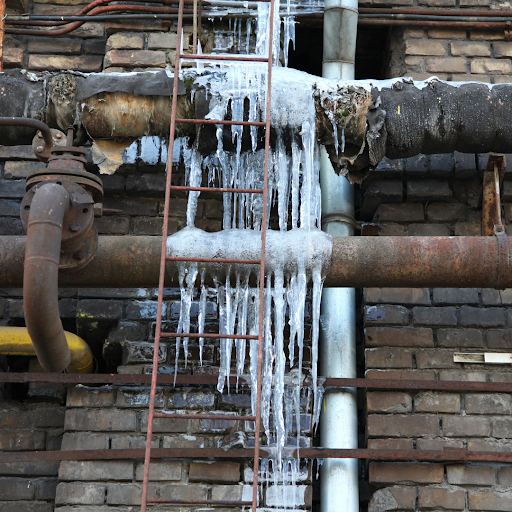Safeguarding Pipes from Freezing Issues: Key Tips
Safeguarding Pipes from Freezing Issues: Key Tips
Blog Article
How do you feel on the subject of Helpful Tips to Prevent Frozen Pipes this Winter?

Winter can damage your plumbing, particularly by freezing pipelines. Right here's exactly how to prevent it from taking place and what to do if it does.
Introduction
As temperatures decline, the risk of icy pipes rises, possibly causing costly repair services and water damage. Recognizing how to avoid frozen pipelines is important for property owners in cold climates.
Avoidance Tips
Shielding at risk pipes
Wrap pipelines in insulation sleeves or make use of heat tape to shield them from freezing temperatures. Focus on pipelines in unheated or exterior areas of the home.
Heating strategies
Keep indoor rooms sufficiently warmed, specifically locations with pipes. Open up closet doors to permit cozy air to flow around pipes under sinks.
Exactly how to recognize frozen pipes
Look for reduced water flow from faucets, unusual smells or sounds from pipelines, and visible frost on subjected pipes.
Long-Term Solutions
Structural adjustments
Consider rerouting pipelines away from exterior wall surfaces or unheated locations. Add added insulation to attic rooms, basements, and crawl spaces.
Upgrading insulation
Invest in high-grade insulation for pipelines, attics, and wall surfaces. Appropriate insulation aids preserve consistent temperature levels and reduces the risk of icy pipes.
Securing Outdoor Pipes
Yard hose pipes and exterior faucets
Detach and drain yard hose pipes before wintertime. Mount frost-proof spigots or cover outside taps with shielded caps.
Understanding Icy Pipelines
What creates pipes to freeze?
Pipes freeze when subjected to temperature levels listed below 32 ° F (0 ° C) for prolonged durations. As water inside the pipelines freezes, it increases, taxing the pipe walls and potentially causing them to rupture.
Dangers and damages
Frozen pipes can cause water supply disruptions, home damages, and costly repair services. Burst pipes can flooding homes and create substantial structural damage.
Indicators of Frozen Piping
Identifying icy pipes early can prevent them from breaking.
What to Do If Your Pipelines Freeze
Immediate actions to take
If you believe frozen pipelines, maintain faucets open up to ease pressure as the ice thaws. Utilize a hairdryer or towels soaked in warm water to thaw pipelines slowly.
Verdict
Stopping icy pipes calls for positive measures and quick feedbacks. By comprehending the reasons, signs, and safety nets, property owners can shield their plumbing during winter.
5 Ways to Prevent Frozen Pipes
Drain Outdoor Faucets and Disconnect Hoses
First, close the shut-off valve that controls the flow of water in the pipe to your outdoor faucet. Then, head outside to disconnect and drain your hose and open the outdoor faucet to allow the water to completely drain out of the line. Turn off the faucet when done. Finally, head back to the shut-off valve and drain the remaining water inside the pipe into a bucket or container. Additionally, if you have a home irrigation system, you should consider hiring an expert to clear the system of water each year.
Insulate Pipes
One of the best and most cost-effective methods for preventing frozen water pipes is to wrap your pipes with insulation. This is especially important for areas in your home that aren’t exposed to heat, such as an attic. We suggest using foam sleeves, which can typically be found at your local hardware store.
Keep Heat Running at 65
Your pipes are located inside your walls, and the temperature there is much colder than the rest of the house. To prevent your pipes from freezing, The Insurance Information Institute suggests that you keep your home heated to at least 65 degrees, even when traveling. You may want to invest in smart devices that can keep an eye on the temperature in your home while you’re away.
Leave Water Dripping
Moving water — even a small trickle — can prevent ice from forming inside your pipes. When freezing temps are imminent, start a drip of water from all faucets that serve exposed pipes. Leaving a few faucets running will also help relieve pressure inside the pipes and help prevent a rupture if the water inside freezes.
Open Cupboard Doors
Warm your kitchen and bathroom pipes by opening cupboards and vanities. You should also leave your interior doors ajar to help warm air circulate evenly throughout your home.

I recently found that post about 6 Ways to Prevent Frozen Pipes when browsing on the web. For those who enjoyed our blog posting kindly consider to pass it around. Thanks for being here. Come back soon.
Find Out More Report this page